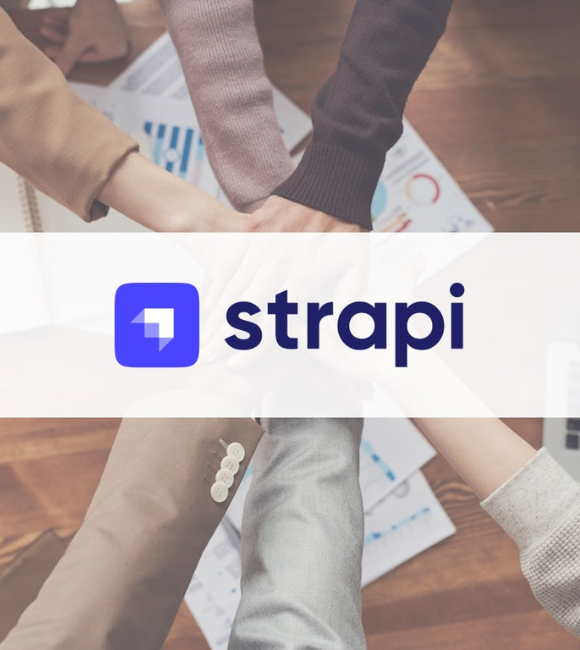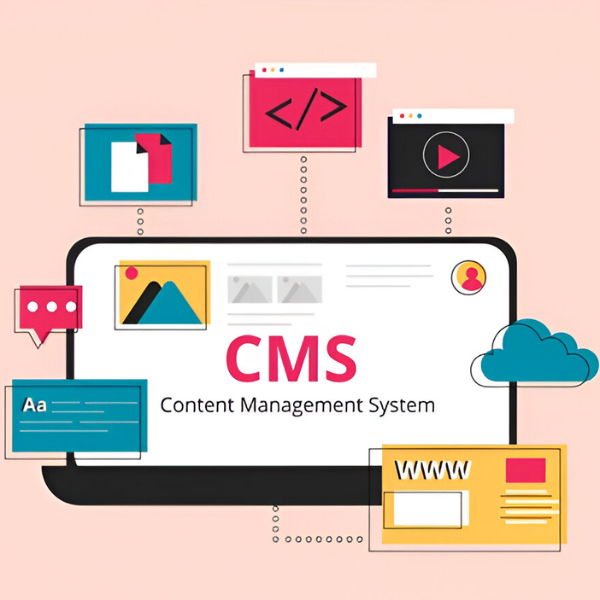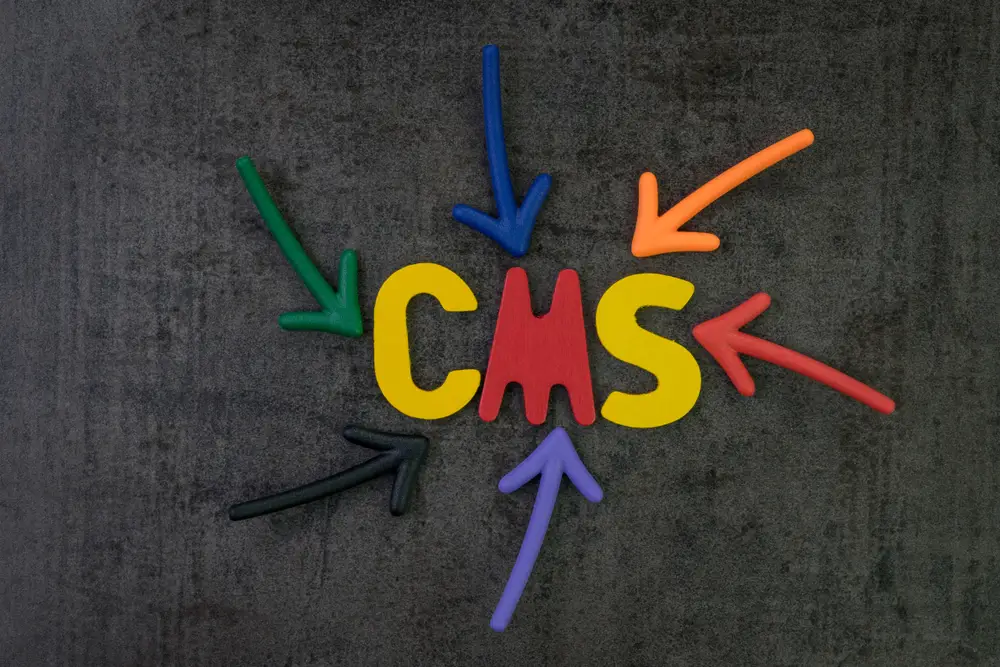Strapi Development Services
Epistic offers Strapi headless CMS development services for web and mobile applications.
Our Strapi experts build API first content solutions designed for high performance and delivery across multiple platforms.
OUR STRAPI DEVELOPMENT SERVICES
Custom Strapi CMS Development Services for API Driven Applications
Custom CMS Architecture
Design adaptable content models with advanced permissions and reusable fields to power structured platforms that scale.
Learn MoreAPI & Frontend Integration
Connect Strapi APIs with any frontend framework for smooth data flow and multi device experiences.
Learn MoreStrapi Plugin Development
Build custom plugins to extend Strapi functionality, automate workflows or integrate external services.
Learn MoreMigration to Strapi
Migrate securely from legacy CMS to Strapi with content transfer, schema mapping and zero downtime.
Learn MoreStrapi Cloud Deployment
Host Strapi on AWS, Azure, or GCP with CI/CD pipelines, SSL setup and auto scaling for reliability.
Learn MoreThird-Party Integrations
Integrate Strapi with CRMs, ERPs, payment gateways and analytics tools for a unified ecosystem.
Learn MoreStrapi Performance Optimization
Speed up API responses, reduce load times, and improve reliability with caching and query tuning.
Learn MoreUser Role Management
Set up user roles (editor, author, admin) with appropriate access controls for content teams.
Learn MoreCMS Localization
Enable multilingual content delivery using Strapi built-in i18n features and region-specific settings.
Learn MoreCustom Admin Panel Styling
Customize the admin dashboard UI to match your brand and improve usability for editors.
Learn MoreContent Versioning & Approval
Implement content versioning and publishing workflows with draft states and rollback options.
Learn MoreStrapi Consulting Services
Expert Strapi consulting on architecture, plugin selection, deployment strategy, and project roadmaps.
Learn MoreOngoing Support & Maintenance
Ongoing support with version updates, bug fixes, and performance checks to keep your CMS running smoothly.
Learn MoreHeadless Commerce Integration
Integrate Strapi with Shopify, Stripe, or custom checkout modules for content powered eCommerce solutions.
Learn MoreTools & TECHNOLOGIES
Tools and Technologies We Use for Strapi CMS Development
 Docker
Docker
 Keras
Keras
 MxNet
MxNet
 Numpy
Numpy
 OpenNN
OpenNN
 Pytorch
Pytorch
 Scikit
Scikit
 TensorFlow
TensorFlow
 XGBoost
XGBoost
 Dotnet
Dotnet
 Java
Java
 Laravel
Laravel
 Node
Node
 Python
Python
 Dotnetnuke
Dotnetnuke
 Drupal
Drupal
 Joomla
Joomla
 Kentico
Kentico
 Sharepoint
Sharepoint
 Sitecore
Sitecore
 Sitefinity
Sitefinity
 Strapi
Strapi
 Umbraco
Umbraco
 Wordpress
Wordpress
 Dynamics CRM
Dynamics CRM
 Hubspot CRM
Hubspot CRM
 ODOO
ODOO
 Sage CRM
Sage CRM
 Salesforce CRM
Salesforce CRM
 Azure SQL Db
Azure SQL Db
 Blob Storage
Blob Storage
 Cosmos DB
Cosmos DB
 Data Lake
Data Lake
 DynamoDB
DynamoDB
 ElastiCache
ElastiCache
 GC Datastore
GC Datastore
 GC SQL
GC SQL
 RDS
RDS
 Redshift
Redshift
 S3 Bucket
S3 Bucket
 Apache Cassandra
Apache Cassandra
 MariaDB
MariaDB
 MongoDB
MongoDB
 MS Sql Server
MS Sql Server
 MySql
MySql
 Postgre SQL
Postgre SQL
 RealM
RealM
 SQLite
SQLite
 Ansible
Ansible
 Apache Mesos
Apache Mesos
 AWS Dev Tools
AWS Dev Tools
 Azure Devops
Azure Devops
 Chef
Chef
 Docker
Docker
 Gitlab CI/CD
Gitlab CI/CD
 Google Dev Tools
Google Dev Tools
 Hashicorp Packer
Hashicorp Packer
 Jenkins
Jenkins
 Kubernetes
Kubernetes
 OpenShift
OpenShift
 Puppet
Puppet
 Saltstack
Saltstack
 Teamcity
Teamcity
 Terraform
Terraform
 Angular
Angular
 ExpressJs
ExpressJs
 NextJs
NextJs
 ReactJS
ReactJS
 VueJs
VueJs
 Appian
Appian
 Bubble
Bubble
 Mendix
Mendix
 OutSystems
OutSystems
 Power Apps
Power Apps
 Android
Android
 Flutter
Flutter
 Ionic
Ionic
 iOS
iOS
 React Native
React Native
 Magento
Magento
 Nop Commerce
Nop Commerce
 Shopify
Shopify
 Woocommerce
Woocommerce
ADVANTAGES
Key Benefits of Strapi Headless CMS
Strapi Development Company Trusted by Global Brands
OUR Developer SKILL
Qualities Our Strapi CMS Consultants
API First Design Mindset
Skilled in designing RESTful and GraphQL APIs, implementing secure endpoints, and building custom integrations.
CMS Customization
Experienced in modifying the admin UI, integrating plugins, and branding the dashboard to fit your needs.
Strapi Architecture Expertise
Proficient in constructing scalable CMS backends with decoupled frontends for future growth.
Communication & Delivery
Familiar with agile tools, sprint planning, and thorough documentation to ensure smooth project delivery.
Strapi CMS Development Process Follow By Expert Team
Discovery & Planning
Requirement gathering, technical feasibility analysis, and defining the project roadmap.
Architecture Design
Content modeling, API structure planning, and establishing a security strategy.
Implementation
Headless CMS setup, frontend connection, and third-party integrations.
Testing
Comprehensive functional, performance, and security QA testing.
Deployment
Launch on cloud platforms with full monitoring and verification.
Support
Ongoing maintenance, upgrades, and optimization after launch
Discovery & Planning
Requirement gathering, technical feasibility analysis, and defining the project roadmap.
Architecture Design
Content modeling, API structure planning, and establishing a security strategy.
Implementation
Headless CMS setup, frontend connection, and third-party integrations.
Testing
Comprehensive functional, performance, and security QA testing.
Deployment
Launch on cloud platforms with full monitoring and verification.
Support
Ongoing maintenance, upgrades, and optimization after launch
Planing to Use API-First CMS Platform? Choose Strapi.
OUR DEVELOPMENT APPROACH
Our Development Approach For Strapi Solutions
Agile
Iterative development with continuous feedback loops. Ideal for projects with evolving requirements, enabling adaptability and ongoing enhancement.
Scrum
Structured sprints for incremental progress and clear team accountability. Great for complex Strapi projects with multiple stakeholders.
Waterfall
Suited for projects with fixed requirements and minimal expected changes during development.
Kanban
Visual workflow management that balances tasks against team capacity. Ideal for continuous Strapi maintenance and support tasks.
DevOps
Integration of development and operations with automation and CI/CD pipelines. Accelerates Strapi deployments while maintaining high quality.
Lean
Focus on eliminating waste and prioritizing essential features. Enables efficient delivery of Strapi solutions with minimal resources.
WHY CHOOSE US ?
Top Strapi Development Company For Hedless CMS Development

Experienced Strapi Developers
Our team has delivered numerous Strapi projects across various industries. We stay up to date with the latest Strapi features and best practices to maximize Strapi potential.
Customization Expertise
We customize Strapi implementations to your unique needs. Strapi CMS will integrate smoothly with existing systems and fully support your business processes.
Thorough Testing
We conduct extensive automated and manual tests so your Strapi website remains secure, reliable, and fast.
Timely Delivery
We meet deadlines through effective project management and a dedicated team. Our team make sure that project is delivered on schedule with 100% quality.
Affordable Costing
Affordable pricing models (fixed price, dedicated team, etc.) to fit different budgets. Quality Strapi services at a cost that works for you.
OUR TRACK RECORD
Our Impressive Track Record As Leading Strapi Development Company
Who We Are
Happy Customers

Years of Services

Why Choose Us
OUR WORK
Our Recent Case Studies
Not Sure if Strapi is the Right Fit?
HEADLESS CMS USER GUIDE
Guide to Effective Strapi CMS Development
Understanding Strapi Headless CMS
Headless CMS Structure
Headless CMS vs Traditional CMS
WordPress vs Strapi
BUSINESS TYPE WE WORK WITH
Serving Diverse Business Types with Strapi CMS Websites

Startups
We offer startups scalable, affordable Strapi solutions, enabling quick launches and growth with agile development tailored to their evolving needs. Know More About Startup Service
Learn More
Small and Medium-Sized Businesses (SMBs)
SMBs get user friendly Strapi CMS setups from us, boosting their online presence and simplifying content management for small teams. Know More About SMB Software Development
Learn More
Enterprises
For enterprises, we build secure, scalable Strapi systems with advanced features like multi tenant support and robust integrations. Know More About Enterprise Software Development
Learn More
Digital Agencies
We help agencies deliver Strapi CMS solutions to clients, enhancing their offerings with our expert development services. Know More About White Label Software Development
Learn More
Government Organizations
We provide secure, compliant Strapi CMS solutions for government, meeting strict standards for public sector content needs. Know More About Government Software Development
Learn More
Non Profits Organizations
Non profits organizations benefit from our cost-effective Strapi solutions, managing content efficiently to support their missions online. Know More About NGO Software Development
Learn MoreStrapi For All Industries
Strapi Solutions for Various Industries
Custom Strapi Development for Small and Medium Business
ENGAGEMENT MODELS
Flexible Engagement Models for Strapi Projects

Fixed Cost Project

Staff Augmentation

Dedicated Team

Hire Offshore Experts
FIXED COST PROJECT
Strapi Development Packages for Every Budget
Starter Package
1 Months
2000+
Business Package
2-3 Months
5000+
Enterprise Package
3-6 Months
8000+
Already Using WordPress? Switch to Strapi With No Downtime
HIRE DEDICATED CMS DEVELOPER
Hire Dedicated Strapi Development Team
Hire Junior Strapi Developer
Hire Senior Strapi Developer
Hire Strapi Team Lead
Hire Frontend Developer
Hire UI/UX Designer
COST COMPARISON
Strapi CMS Development Cost Comparison India vs Other Regions
- Junior Developer
- Senior Developer
- Team Lead
- UI/UX Designer
- QA Engineer
- Business Analyst
- Project Manager
- $55 – $80/hr
- $78 – $125/hr
- $90 – $140/hr
- $56 – $112/hr
- $48 – $50/hr
- $44 – $47/hr
- $60- $70/hr
- $32 – $50/hr
- $45 – $80/hr
- $60 – $100/hr
- $50 – $70/hr
- $60 - $80/hr
- $32 – $50/hr
- $50 – $70/hr
- $17 – $30/hr
- $25 – $50/hr
- $30 – $60/hr
- $27 – $36/hr
- $15 – $30/hr
- $22 – $30/hr
- $36 – $49/hr
- $15 – $30/hr
- $25 – $50/hr
- $30 – $60/hr
- $20 – $46/hr
- $10 – $30/hr
- $20 – $30/h
- $20 – $40/hr
COST SAVING
Why Outsource Strapi CMS Development to India?
Hire Top Rated Strapi Developers in India
Frequently Asked Questions
Frequently Asked Questions About Strapi CMS
What are the benefits of Headless CMS Architecture?
What is typical timeline for Strapi projects?
How much it cost to build Strapi website?
What are the security features in Strapi CMS?
How easy to scale Strapi CMS?
What are the industries can be benefitted from Strapi CMS?
CLIENT REVIEWS
What Our Clients Say About Us
Blogs
Insights and Updates on Strapi CMS
Our blog shares expert tips, trends, and tutorials on Strapi CMS development, keeping you informed and inspired about headless CMS solutions.



How to Scale Your Online Business with a Strapi Corporate Website
Scaling your online business simply means making it grow smoothly without getting stuck anywhere with technical problems or delays. The Strapi Website helps you to do just that. It keeps your work neat and under control while making it easier to publish and manage content as your business grows.
-
Faster releases with clean workflows
-
SEO-ready rendering with headless
-
Multi-channel content from one hub
-
Lower maintenance and fewer plugins
What is a Strapi Corporate Website and Why It Matters?
You can call Strapi Website as the main hub where all the content is easily stored and managed. As your only single website, now with the help of Strapi you can send the same content to your website, mobile app, or other digital tools through something called APIs. It is very flexible and powerful for businesses that want to grow.
Strapi is important for businesses because it makes content updates fast, keeps the system safe, and helps the website grow without problems. It saves our time by allowing the same content to work on websites, apps, and more. As an example, an online bookstore owner can quickly add new books or offers, while the tech team keeps the site secure and speedy. Customers see updates instantly, and the business grows easily.
Key features that make Strapi different from other CMS
strapi website builder focuses on structured content and clean APIs. Content types explain your schema, and the admin panel gives non-technical editors a safe place to work. Version 5 introduced document-based content, Content History, and quick Preview, which smooths editorial work and developer DX in one step.
Strapi’s Draft & Publish separates drafts from live entries, so editors stage content without risking production. You can query draft or published versions explicitly using the Document Service API, which keeps frontend logic predictable across environments.
RBAC in the admin panel lets you grant fine-grained access for administrators. Teams can add custom conditions when needed, so audits remain practical even as organizations grow and roles get more specific.
How startups and enterprises benefit from Strapi business websites?
Early-stage teams value the fast setup and code control. Without redesigning, you can begin with a lean data model and then grow to product catalogs, regions, or net-new brands. Enterprise groups benefit from the consistent APIs, role-based access, Releases containers, and the upgrade tool that automates large steps when moving versions.
Our experience with clients: content people stay focused on pages and media, while engineers iterate on performance, tests, and integrations. Fewer cross-team interrupts equals fewer mis-merges. It sounds small, it compounds over quarters.
Strapi as an open source headless CMS for flexibility
strapi headless cms website is open source and uses Node.js with TypeScript support, so you control hosting, extensions, and infrastructure. You can run it on your cloud or choose Strapi Cloud if that suits your ops model. SOC 2 and GDPR notes on the official site help due-diligence for enterprise buyers.
Internationalization moved into the core in v5, to ensure locales behave consistently across REST, GraphQL, and the Document Service. This becomes important when your marketing team needs Arabic next week and German the following quarter.
How Strapi Business Website Helps Scale Companies Faster?
Scaling here means you can launch new pages quickly, work safely without mistakes, and avoid rebuilding everything as your products or regions increase. Strapi helps with this by giving organized content, safe role controls, and easy ways to show pages on the frontend.
Role of content management in business growth
Strapi makes growth easier by letting teams create repeatable content and edit safely. With Draft & Publish, Content History, and scheduling, marketing teams can plan launches without relying on developers. Editors can preview changes and publish on time. Some teams have even launched microsites in a single day once the setup was ready. The key is steady progress, even if every detail isn’t perfect at first.
Why enterprises choose Strapi for brand scalability?
Enterprises juggle many brands and locales. Strapi’s i18n core, admin RBAC, and data transfer CLI give control when you replicate environments or split teams. The upgrade tool reduces manual toil during major version jumps and code mods the bulk of breaking changes, which eases the risk of keeping current.
Security reviews often ask about rate limiting and permission audits. Strapi’s guides cover API security and admin reviews, with practical checklists for recurring audits. We follow those patterns when we set baselines.
Examples of companies scaling with Strapi websites
Public case studies show delivery speed and channel breadth. Tesco streamlined communications across 24 channels, Airbus Space Digital consolidated platforms into one compassable CMS, and Yatra scaled to 10M users with faster campaigns, each citing Strapi as a core part of the stack.
That goes along with what we see in mid-market too. One client moved from a plugin-stacked CMS to Strapi and cut publishing lead time by over half. Numbers vary, but the trend holds steady.
What Are the Business Benefits of a Strapi Corporate Website?
When businesses choose Strapi website development services, they gain more than just a modern website. The real benefits show up in many areas: editors can work faster, SEO options on the frontend help improve visibility, content can reach audiences across multiple channels, and costs stay under control without relying on endless plugins.
A Strapi Corporate Website not only supports growth today but also keeps your business ready for future expansion—making it a smart investment for companies of all sizes.
Faster content updates for agile marketing teams
Editors use Repeatable Components, Content History, and Preview to stage pages, fix copy, and ship campaigns without backend changes. Draft & Publish lets them coordinate publishing at exact times while keeping drafts separate and recoverable. Releases help bundle many entries for timed drops across locales and brands.
Better SEO performance with Strapi CMS
Headless lets your frontend use SSR or SSG. Next.js documentation notes SSG is often best for SEO since HTML ships pre-rendered, improving indexing and load performance. Google’s JavaScript SEO docs explain how rendering affects indexing, which is why pre-rendered content avoids indexing delays.
In practice we pick SSG for marketing pages, ISR for frequently updated sections, and SSR only where freshness must be real-time. That mix keeps Core Web Vitals tidy and indexing predictable.
Omnichannel content delivery advantages
One content item can serve a website, mobile app, and partner portal through REST or GraphQL. Structured fields keep variants consistent, and locales add reach without duplicating schemas. The Document Service lets you query a specific status, which supports staged releases to different channels.
Reduced website maintenance costs
Mono-repo tangles shrink when content moves out of the monolith. Fewer theme conflicts, fewer plugin cascades breaking on updates. Developers ship small services for search, personalization, or analytics instead of bending a theme to do everything. We still set budgets and tests, but the surface area is saner.
How to Build High Performing Strapi Business Website?
Execution matters more than just talking about tools. Here’s the roadmap we follow to build high-performing Strapi corporate sites—complete with lessons from real launches and a few mistakes we stumbled on (and fixed) along the way.
Essential steps for building a Strapi corporate site
Start by shaping content types around your brand’s real entities. Build the admin UX for editors with components and field validations. Configure Draft & Publish and enable Preview. Add environments with the transfer tokens you will use later for staging and production moves. Wire caching and image optimization early.
Things that test your patience, fixes we repeat
-
Media fields balloon, add image presents
-
Editor roles drift, run quarterly audits
-
Menus sprawl, model navigation content
-
Preview breaks, verify URL template
-
Slugs collide, add unique constraints
Choosing a front end framework with Strapi
Framework choice depends on your rendering strategy and team comfort. Next.js gives ISR and SSG that work well for marketing pages and catalogues. The docs point out SSG ships static HTML for top SEO and performance. Pick Nuxt, Astro, or Remix if your team already moves fast there. Keep the stack boring where revenue flows?
For SEO-heavy pages we use SSG with periodic revalidation. For dynamic sections like investor updates we mix ISR. That balance keeps build times reasonable and index able HTML ready at request time.
Integrations that make a Strapi website more powerful
Your corporate site will likely connect to CRM, analytics, and search. Strapi’s plugin SDK and clean APIs help build small, testable connectors instead of cramming logic into templates. For content sync across environments, the CLI data management commands provide export, import, and transfer with strict schema matching.
Our favorite tools and why
-
Next.js ISR for stable SEO
-
Algolia for fast search UX
-
Imgproxy for image resizing
-
Playwright for content flows
-
Plausible for lightweight analytics
How Secure and Reliable is a Strapi Corporate Website?
Security is not just something you tick off once, it’s something you keep doing every day. Strapi helps by giving safe logins for admins, special keys (tokens) for APIs, and simple tips to stay safe. But you also have a job: use these safety tools, check them often, and keep everything updated so your website stays protected.
Security best practices in Strapi CMS setup
Start with least-privilege roles in the admin panel and review them on a schedule. Add rate limiting at the API gateway. Use HTTPS only, rotate tokens, and separate environments. Strapi’s security guides and checklists give sane defaults for rate limiting, encryption, and audits.
Example config/middlewares.js hardening:
module.exports = [
'strapi::errors',
{
name: 'strapi::security',
config: {
contentSecurityPolicy: {
useDefaults: true,
directives: {
'img-src': ["'self'", 'data:', 'https:']
}
}
}
},
'strapi::cors',
'strapi::poweredBy',
'strapi::logger',
'strapi::body',
'strapi::session',
'strapi::favicon',
'strapi::public'
]
Data protection and compliance features
Strapi development highlights SOC 2 and GDPR readiness on the product site, and the platform’s separation of content from rendering reduces the attack surface compared to theme-heavy monoliths. While compliance depends on your processes and logging, the underlying system is designed with enterprise needs in mind.
Why Strapi is trusted by global enterprises?
Public customer stories reference multi-channel publishing, migrations from legacy stacks, and measurable time savings. Those are not magic, just repeatable practices where structured content and rules reduce last-mile chaos. Brands like Tesco and Sonos show how that plays out across many teams.
What Is the Cost of Building a Strapi Corporate Website?
Cost depends on 3 criteria: build effort, integrations, and operations. Open source license helps, real spend comes from clean modelling and your rendering layer.
Factors that affect Strapi website development costs
The content model complexity drives engineering time. Multi-brand, multi-locale, and heavy integrations add scope. Frontend rendering choice can change infra costs and build times. Migration of legacy content is also a line item, so plan transfer or import pipelines with dry runs to avoid surprises.
Custom development vs. readymade Strapi solutions
Starters speed up day one, but you still need to align data structures with the business domain. Plugins cover essentials yet do not remove the need for tests. Teams that over-plugin end up with brittle upgrades and debugging waste. Keep extensions small, focussed, and owned.
Long term ROI of Strapi website for businesses
ROI lands in faster publishing, fewer regressions, and easier brand or region expansion. You also get clearer paths for performance work on the frontend, which improves conversion. We have seen teams remove a dozen plugins and regain control of their release calendar. Not flashy, just compounding wins.
Should You Choose Strapi CMS or Traditional CMS for Business?
Pick the tool that lets you move content at speed without harming engineering. Strapi wins where omnichannel, performance, and customization matter.
Difference between Strapi and WordPress for enterprises
WordPress is a monolithic CMS with a large plugin ecosystem and theme layer. Strapi is headless and pushes rendering to your choice of frontend, which improves control and performance. WordPress can be used headless, though that usually adds custom work only to reach what Strapi ships by default.
|
Attribute |
Strapi (Headless) |
WordPress (Monolith) |
|
Rendering |
Any framework, SSG or SSR |
Theme render pipeline |
|
Security surface |
Smaller by design |
Plugins expand surface |
|
Content modelling |
Strong types and components |
Custom fields and plugins |
|
Scaling brands |
Content hub pattern |
Multisite or plugin mix |
|
Upgrade path |
CLI upgrade tool |
Plugin compatibility checks |
When to choose Strapi over Drupal or Joomla
Heavy brand catalogues, multi-locale content, and distributed teams tend to fit Strapi well. You model entities once and reuse them across channels. If you live inside a single web property with deep editorial workflows tied to a theme, legacy systems may still fit. For anything flexible, Strapi earns the time.
Future proofing business websites with Strapi
Headless keeps presentation separate from content, so a new framework or channel does not mean a CMS rebuild. Strapi’s upgrade tool and v5 document model reduce migration pain and keep editorial features moving forward. That setup makes it easier for product teams to plan roadmaps that stretch over multiple years.
How to Migrate From Legacy CMS to a Strapi Corporate Website?
Good migrations come from strict schema mapping, staged transfers, and testable content pipelines. Rushing here hurts later.
Common migration challenges and how to solve them
Field mismatch is the classic bugbear. Solve it with a mapping table and test runs on a subset. Media links break if folder rules change, so use an asset proxy or batch rewrite. Slugs change behaviour across systems, so reserve slug fields and enforce uniqueness before go-live.
Tools that make Strapi website migration easier
The strapi transfer command moves content, files, and configure between instances with transfer tokens and strict schema matching. Combine it with export or import for backups and repeatable dry runs. The v5 upgrade tool automates code mods when you modernize older projects.
How Strapi Corporate Website Enhances Digital Experiences?
Modern websites are more than pages. They personalize content, run workflows, and speak many languages. Strapi sits in the middle as the source of truth.
Personalization features with Strapi
Personalization typically lives on the frontend or an edge worker. Strapi stores the variants and rules. Your app decides which variant to render using user traits or geo. Keep the CMS clean of device logic, and store only the content options and flags.
Content workflows for enterprise teams
Releases group entries for simultaneous publish or unpublished across locales, which matters for campaigns and embargoes. Combined with RBAC and Content History, teams can coordinate large changes with audit trails and rollback options that feel calm under pressure.
Multi language and global reach support
Locales live in core for v5, and the APIs accept locale parameters for create, update, or read. That makes copy ownership clear by region and reduces duplicated content. Frontend frameworks can then map locale routes and pre-render correct pages for indexing.
Best Practices for Managing a Strapi Business Website
Few habits keep Strapi healthy. Model content like data, keep release calendars visible, and treat plugins as code you own.
Performance optimization tips for Strapi websites
Cache API responses at the edge, compress images, and pre-render public pages. Next.js or Nuxt SSG gives you HTML upfront, which the Next docs call best for SEO in many cases. Track Core Web Vitals and watch TTFB spikes under campaign traffic to avoid sudden drops.
Content workflow strategies for large teams
Use RBAC to separate editors, reviewers, and publishers. Add a quarterly review of admin roles and stale accounts, which Strapi’s security posts recommend as a simple recurring control. Keep a release checklist in your repo so content steps and deploy steps stay aligned.
Regular updates and plugin management
Plan minor upgrades each quarter and include a plugin review. The official upgrade tool handles dependencies and codemods across versions, which reduces the chance of bit-rot. Keep a CHANGELOG of your content model so downstream teams are not surprised.
How Future Ready Businesses Use Strapi for Innovation?
Innovation tends to look messy from the inside. A stable content core means experiments can run at the edge without breaking the site.
Strapi in omnichannel strategies and headless commerce
Product cards, help content, store finders, and policy pages can all come from a single content hub. Your storefront renders them with framework controls for speed, while Strapi keeps the copy and media in one place for teams to maintain.
Role of Strapi in AI and automation driven marketing
Teams plug AI writing aids and review tools into their editorial flow, yet the final truth stays in Strapi. Webhooks push updates to search indexes or personalization engines. Keep automations observable, and never let them write straight to production without review, you will regret it later.
Key Takeaways on Building a Strapi Corporate Website
Strapi gives businesses a strong and stable content foundation, along with clean APIs and helpful editorial tools that make scaling much smoother. When paired with SSR or SSG, it strengthens SEO performance, while tight role management and quarterly upgrade planning ensure security and stability. The result is a flexible, future-ready website that avoids the messy plugin overload many teams eventually struggle with.
FAQs
Question: What is Strapi in web development?
Answer: It is a community-built software. Headless CMS that stores structured content and shows it through REST or GraphQL APIs. Editors work in a friendly admin panel, and developers use any frontend to render pages. This separation makes sites easier to scale and integrate across channels.
Question: Is Strapi better than Word Press?
Answer: Strapi fits projects that need headless delivery, strict content models, and framework freedom. WordPress fits theme-driven sites that live inside one web property. If SEO and performance matter, a Strapi Corporate Website with SSG or ISR often wins because HTML ships pre-rendered for indexing.
Question: Is Strapi good for big projects?
Answer: Yes, Strapi supports large teams with admin RBAC, releases, and migration tools. Public user stories include global brands consolidating channels and shipping faster across many locales. Plan role audits and transfer tokens early to keep environments sane as the project grows in scope.
Question: Is Strapi Suitable for Business website Development?
Answer: Strapi suits business sites that need fast publishing, clean SEO, and multi-language reach. Editors get Draft & Publish and Preview, while developers keep a modern stack. The model stays adaptable, so new brands or pages can launch without a CMS rebuild or plugin chains.
Question: Is Strapi SEO Friendly for corporate websites?
Answer: Strapi itself is backend only, but it enables SEO-ready interfaces that use SSG or SSR. Next.js notes SSG is often best for SEO since pages render to HTML at build time, which helps indexing and performance that search engines reward.
















































